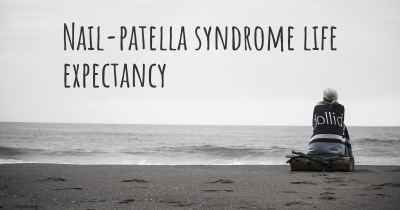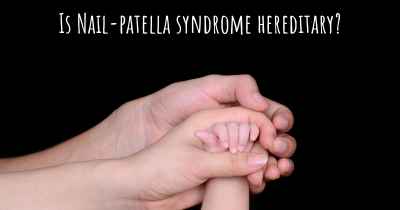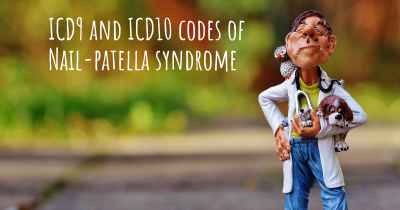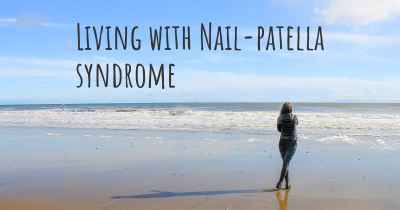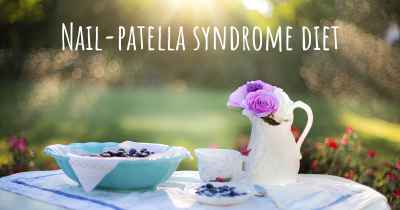Is there any natural treatment for Nail-patella syndrome?
Are there natural treatment(s) that may improve the quality of life of people with Nail-patella syndrome? Here you can see if there is any natural remedy and/or treatment that can help people with Nail-patella syndrome
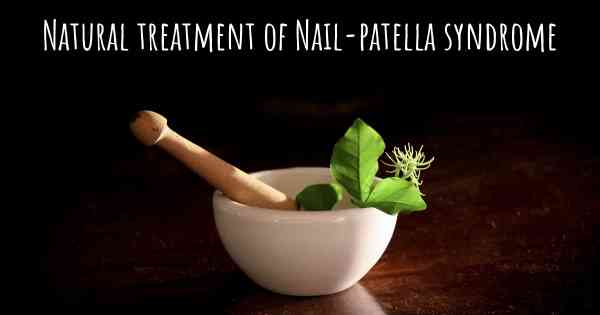
Natural Treatment for Nail-patella Syndrome
Nail-patella syndrome, also known as NPS or hereditary osteo-onychodysplasia, is a rare genetic disorder that affects the development of nails, bones, and other parts of the body. It is caused by mutations in the LMX1B gene and can lead to various symptoms including abnormal nails, skeletal abnormalities, kidney problems, and eye abnormalities.
While there is no cure for Nail-patella syndrome, there are natural treatment options that can help manage the symptoms and improve the quality of life for individuals with this condition. It is important to note that these natural treatments should be used in conjunction with medical care and under the guidance of healthcare professionals.
Diet and Nutrition
Diet and nutrition play a crucial role in managing Nail-patella syndrome. A well-balanced diet can help support overall health and potentially alleviate some symptoms associated with the condition.
1. Calcium and Vitamin D: Adequate intake of calcium and vitamin D is essential for maintaining healthy bones. Including dairy products, leafy greens, fortified cereals, and exposure to sunlight can help meet the body's requirements.
2. Protein: Protein is important for muscle development and repair. Including lean meats, fish, eggs, legumes, and nuts in the diet can provide the necessary protein.
3. Omega-3 Fatty Acids: Omega-3 fatty acids have anti-inflammatory properties and can help reduce joint pain and inflammation. Foods rich in omega-3 fatty acids include fatty fish (salmon, mackerel), flaxseeds, chia seeds, and walnuts.
4. Antioxidants: Antioxidant-rich foods can help reduce oxidative stress and inflammation. Include colorful fruits and vegetables, such as berries, spinach, kale, and bell peppers, in your diet.
Exercise and Physical Therapy
Regular exercise and physical therapy can help improve muscle strength, joint flexibility, and overall physical function. It is important to consult with a healthcare professional or physical therapist to develop an exercise program tailored to individual needs and capabilities.
1. Low-Impact Exercises: Engaging in low-impact exercises, such as swimming, cycling, and walking, can help improve cardiovascular fitness without putting excessive stress on the joints.
2. Strength Training: Incorporating strength training exercises can help build muscle strength and support joint stability. It is important to start with light weights and gradually increase intensity under professional guidance.
3. Stretching and Range of Motion Exercises: Stretching exercises can help improve joint flexibility and range of motion. Physical therapists can provide specific exercises targeting affected joints.
Alternative Therapies
While there is limited scientific evidence supporting the effectiveness of alternative therapies for Nail-patella syndrome, some individuals may find them beneficial in managing symptoms.
1. Acupuncture: Acupuncture involves the insertion of thin needles into specific points on the body to promote pain relief and relaxation. It may help alleviate joint pain and improve overall well-being.
2. Massage Therapy: Massage therapy can help reduce muscle tension, improve circulation, and promote relaxation. It may provide temporary relief from muscle and joint discomfort associated with Nail-patella syndrome.
3. Herbal Remedies: Certain herbs, such as turmeric, ginger, and boswellia, have anti-inflammatory properties and may help reduce joint inflammation and pain. However, it is important to consult with a healthcare professional before using any herbal remedies.
Supportive Measures
In addition to natural treatments, there are several supportive measures that can improve the overall well-being of individuals with Nail-patella syndrome.
1. Pain Management: Over-the-counter pain relievers, such as acetaminophen or nonsteroidal anti-inflammatory drugs (NSAIDs), can help manage pain and inflammation. However, it is important to consult with a healthcare professional before using any medications.
2. Assistive Devices: The use of assistive devices, such as braces, splints, or orthotics, can provide support and improve mobility for individuals with skeletal abnormalities.
3. Regular Medical Check-ups: Regular medical check-ups are essential to monitor the progression of Nail-patella syndrome and address any emerging health concerns. Healthcare professionals can provide guidance on managing specific symptoms and recommend appropriate interventions.
It is important to remember that natural treatments for Nail-patella syndrome should be used in conjunction with medical care and under the guidance of healthcare professionals. Each individual's condition is unique, and what works for one person may not work for another. It is always recommended to consult with a healthcare professional before starting any new treatment or making significant changes to your current treatment plan.
